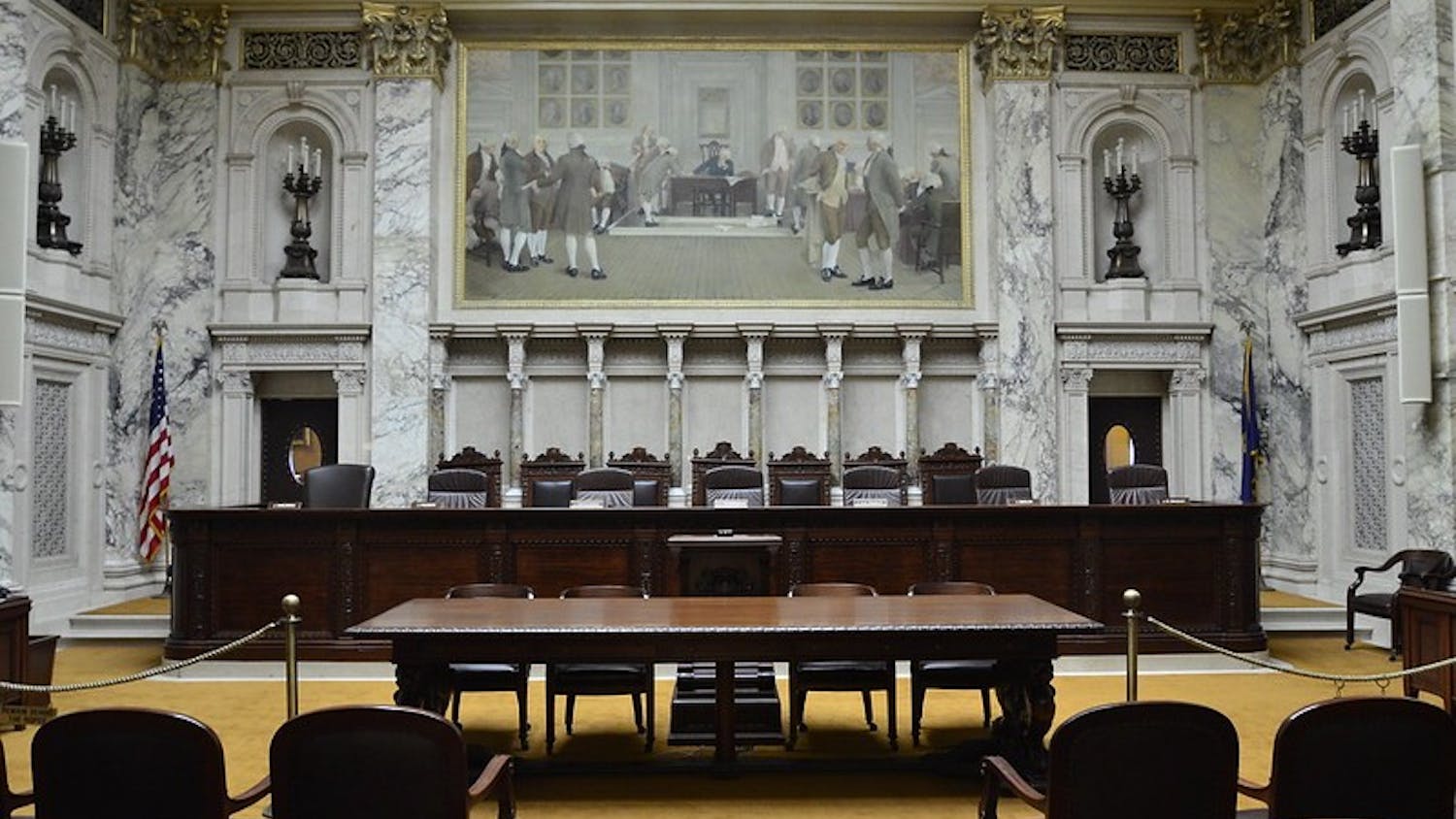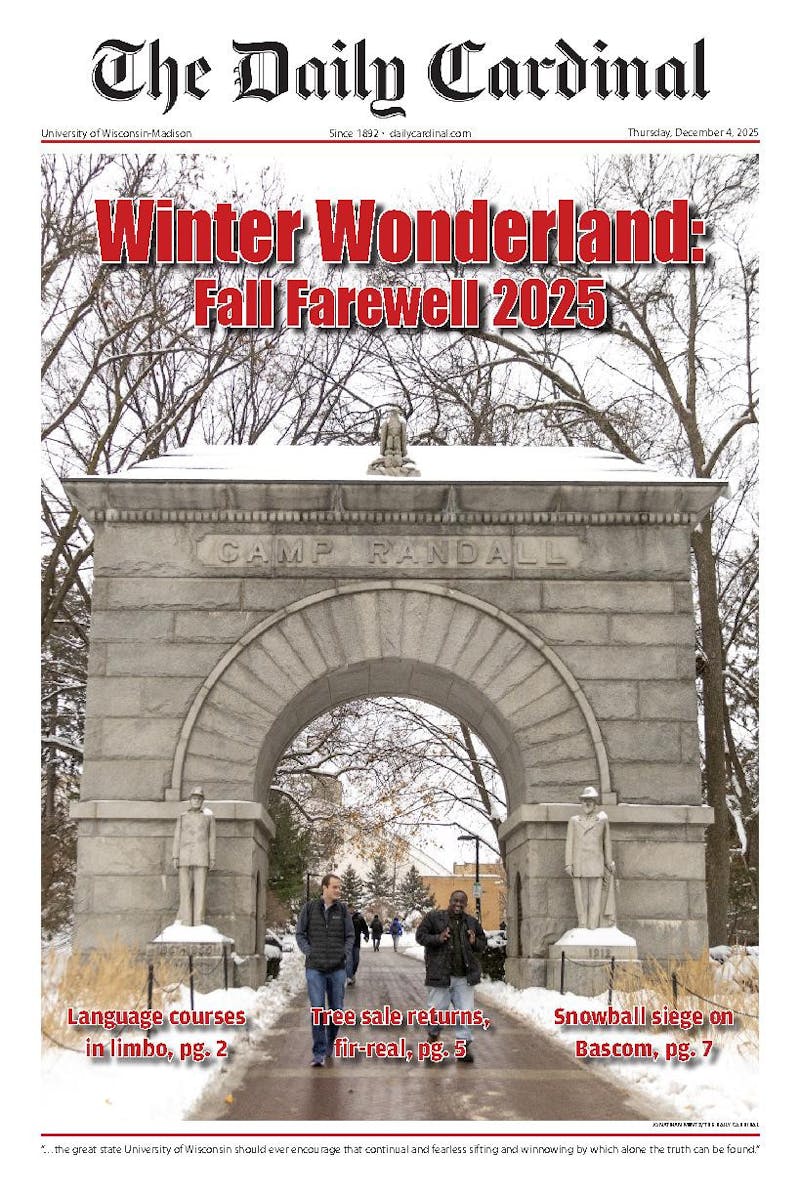In 1892, William Wesley Young, a native of Monroe, Wis., had the radical idea to found an independent daily student paper. While dailies were not without precedent at other universities on the east coast, it was a first for a campus whose only experience with student journalism had been through weekly and monthly literary publications.
On April 4, 1892, after scrounging up resources, collecting advertisers and assembling a co-educational staff, Young and his colleagues distributed the Cardinal's first 400 copies. The front page proudly read that ""this, the first number, is necessarily far from perfect, but we expect to make each succeeding number more valuable and useful.""
The Cardinal exceeded its own founders' expectations and continued to progress and expand with the university it aimed to serve. Only a few decades after its establishment, the Cardinal had become regionally and nationally recognized as the undisputed voice of the campus.
By the interwar years, the Cardinal had already begun to acquire a liberal reputation. It's antiprohibition and infamous ""free love"" editorials ignited a fury among local conservatives and sparked unsuccessful Republican U.S. Senate nominee John Chapple to refer to it as a ""hotbed of radicalism, atheism, loose moral standards and communist doctrines.""
While moral reprehensibility is by no means a defining trait of current and formal Cardinals, liberalism became a trademark of the paper as it entered the postwar era, especially in its opposition to the poster boy for postwar Soviet paranoia, Wisconsin native and U.S. Sen. Joseph McCarthy.
Students at this time, as 1952 Campus Editor Jerrold Schecter recalled, were ""part of a whole new generation who wanted to achieve what they had fought for in the war,"" and there were a ""lot of ... students who were politically conscious and active.""
""It was very exciting, but it was very challenging,"" Schecter's wife, Leona Protas Schecter, magazine section editor in 1951, said of the era. ""It was a fight between people who believed in freedom of expression and those who were opposed.""
This fight continued throughout the decade, but by the mid-'60s, it was joined by another struggle for liberty: the civil rights movement. Gail Bensinger, editor in chief in 1965, recalled going down to Mongomery, Ala. with fellow reporter Dave Wolf and witnessing people in nonviolent demonstrations being arrested en masse.
""Seeing the police lined up, and the kids lined up, it was just so overwhelming,"" she said.
""A lot of people felt very strongly about this issue,"" Bensinger said. ""It was a time of amazing change, and it was really exciting for students who really wanted to be journalists.""
While demonstrations for the civil rights movement were rampant across campus, anger over the war in Vietnam was building as well. The antiwar movement that would gripped the campus became a defining era in not only the Cardinal's history, but that of the university as well.
""The war was very much on our minds, those of our readers,"" said Greg Graze, editor in chief '68-'69. ""Naturally we devoted a lot of coverage to campus activities related to the war and the draft.""
""The feeling on the campus in general ... was that it was a moment of conscience,"" Rena Steinzor, editor in chief '70-'71, said. ""There were many students disturbed by our campus' connection to the military-industrial complex.""
The Cardinal did speak up. It ran many antiwar editorials and a series of investigative articles regarding the research being conducted for the military's efforts in Vietnam.
""That was what the campus was at the time,"" Walt Bogdanich, a Cardinal reporter from '70-'72 and a current investigative reporter at The New York Times, said. ""It was a time when people would express their opinions and views openly. Sometimes foolishly, sometimes appropriately.""
However, it was the combination of the opinions expressed and the investigations into the universities experiments that linked the paper to the bombing of the Army Math Research Center at Sterling Hall. That and the fact that two of the bombers, Leo Burt and David Fine, were Cardinal members.
""Nobody wanted someone killed,"" Steinzor said. ""But on the other hand, these were our friends who had done these terrible things.""
It was during this time, arguably the most radical in the Cardinal's history, that The Badger Herald, the Cardinal's then-conservative adversary, was established.
However, as radicalism and its opposition faded with the end of the '70s, both papers largely shed their polarized political views, and the two engaged in a competition that has come to establish UW as one of the most exciting campuses in the country for student journalism.
By the late '80s, the Cardinal found itself in financial troubles, which persisted through the mid-'90s. The combination of the financial situation with internal struggles going on in the Cardinal itself forced the paper to shut down for seven months in 1995 from February to September.
""Everyone knew that the finances weren't great, but nobody expected it,"" Kristin Komisarek, the editor in chief at the time, said. ""It was unreal.""
Although this was without a doubt the lowest point for the Cardinal, staff members banded together and worked tirelessly to recover the paper that had become such a huge part of their lives.
""The whole staff was very talented, very dedicated,"" Komisarek said. ""Everybody knew that it would come back, it wasn't a question.""
In September of 1995, after seven months of turmoil, the Cardinal printed again, the front page depicting as a phoenix rising from the ashes.
The Cardinal's return has seen the continuation of the quality journalism that the paper had seen for well over a century. From the award-winning diversity piece by Anna Gould in 2001 to coverage of landmark events such as the 9/11 attacks and the election of the country's first black president, the Cardinal and its staff never cease to push the boundaries of the student newspaper.
At 117 years old, The Daily Cardinal has experienced 22 presidents, two world wars and countless social and political upheavals, yet on its most basic level, the paper still operates much as it did over well over a century ago. The Cardinal is, as it has always been, a medium created for the students, by the students.
Through all of the controversy, all of the trials and tribulations, the Cardinal has never ceased to serve its community to the best of its ability, nor has it ever submitted to the control of the university it has helped to define. It is this balance of responsibility and independence that has become The Daily Cardinal's legacy.





